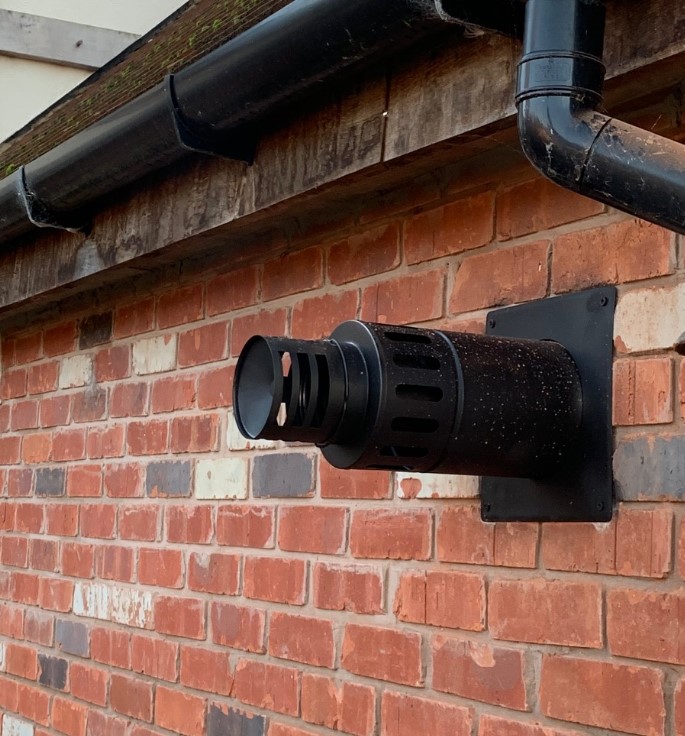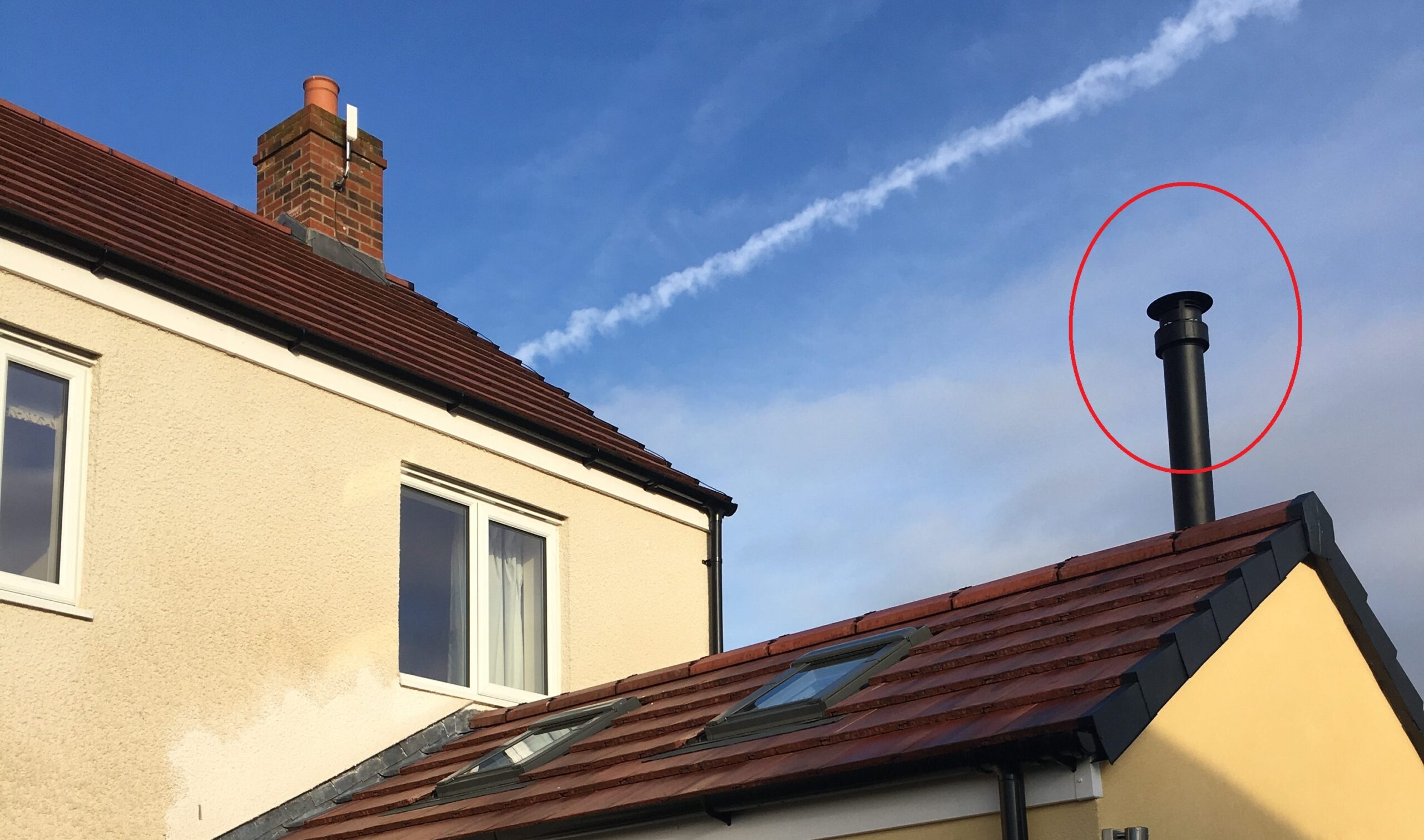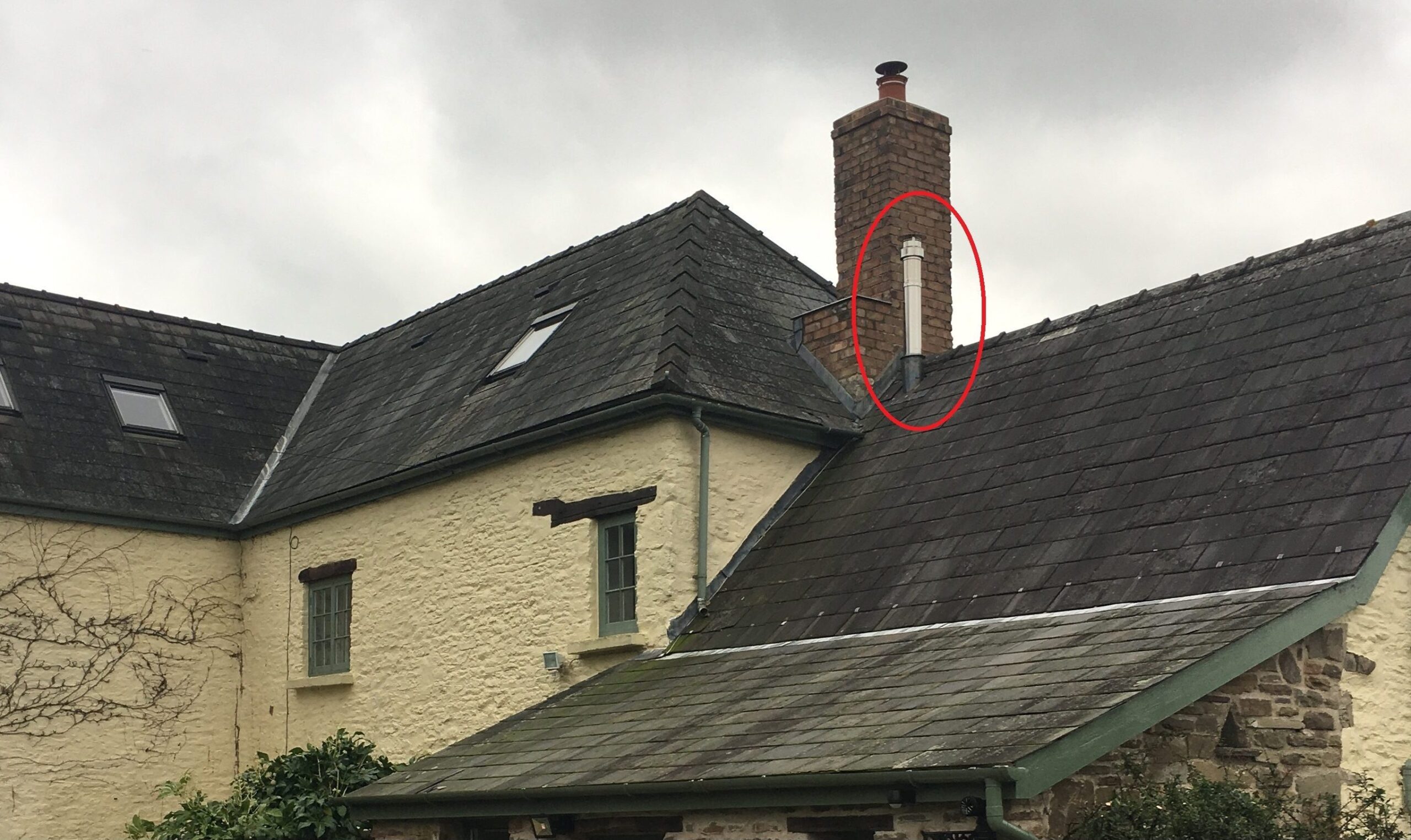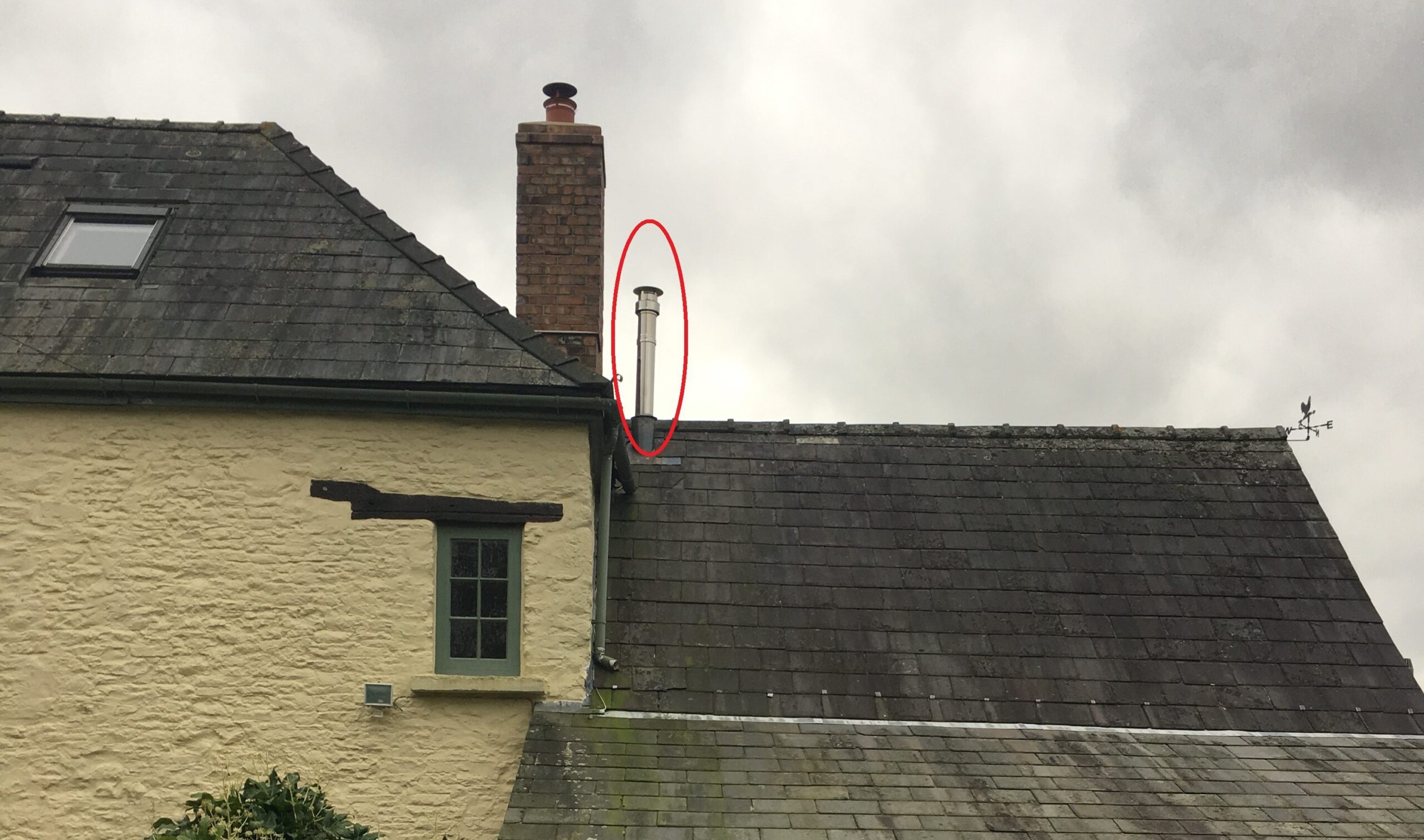Balanced flue for wood stoves
The Lundy stove offers market leading innovation with the option of being installed with a balanced flue. A Balanced flue or also known as a concentric flue provides air to the stove through the outer section of the flue thus drawing air from the exit of the chimney instead of from the room.
Our Lundy stoves are wood burning stoves that work with a balanced flue (like a gas combi boiler) this offers so many advantages over conventional flues:
- Higher efficiency as the air is heated up which improves combustion efficiency and also reduces particle emissions
- Air tightness of the balanced flue means the building does not need additional air vents to provide combustion air for the wood stove; this makes the Lundy stove air tight and suitable for modern low energy homes designs and Passive Houses
- Reduces height of chimney as conventional flues require a minimum permitted chimney height under Building Regulations. By using a balanced flue, the flue can terminate lower than the top of the building and either vertical or horizontal
- The problems with down-draughts are also eliminated by the balanced flue design.
Many of our installations have used the Lundy balanced flue system with a short vertical rise and a horizontal wall exit to overcome cost and complexity of standard flues terminating at higher positions.
The Lundy balanced flue design is novel and a solution that is not available in the traditional wood stove market.
As part of our offering we include a Flue Design Report from calculations using KESA software for balanced flues to BS EN 13384. This can be used to accompany the Building Control application to verify the flue is compliant to building regulations.
For more information, take a look at our blog post “The Balanced Flue – everything you need to know“.

See the following short video for more details of how the balanced flue works:
Some examples of balanced flues installed with Lundy pellet stoves:

Low chimney height when in close proximity to a taller building
Low chimney height when in close proximity to higher roofs and chimneys


